13+ Primary Consumers in the Rainforest and Their Characteristics
Primary consumers in the rainforest are diverse and include iconic species like howler monkeys, leafcutter ants, capybaras, and sloths. These organisms play vital roles in the ecosystem, such as facilitating nutrient cycling, seed dispersal, and pollination. Whether they are herbivorous mammals, insects, birds, or rodents, primary consumers contribute to the intricate web of life in the rainforest by consuming plant materials and influencing the distribution and abundance of plant species.
1. Howler Monkey
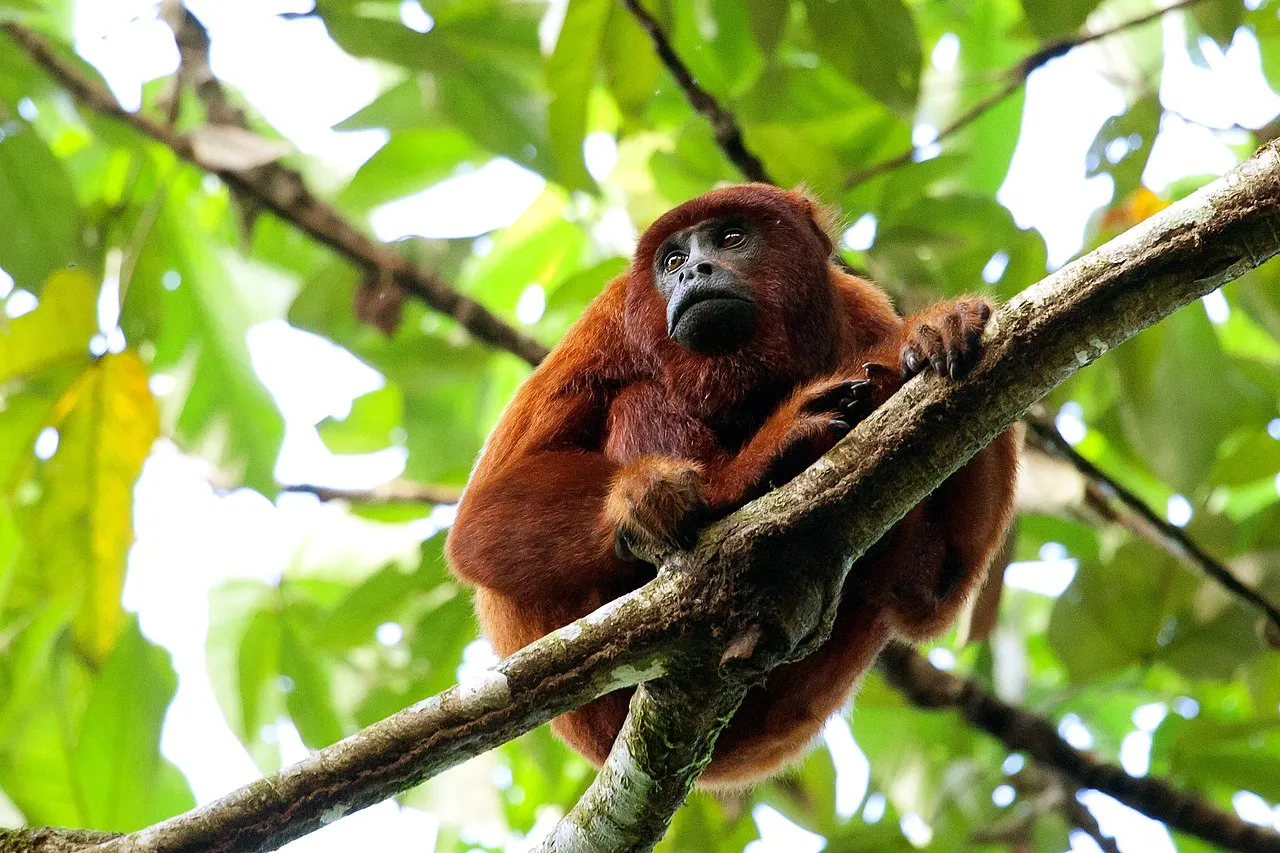
Howler monkeys are iconic inhabitants of the rainforest canopy, primarily found in Central and South America. As primary consumers, they play a crucial role in the ecosystem by feeding on a variety of plant materials, including leaves, fruits, flowers, and occasionally insects. Their diet consists mainly of leaves, which they are well-adapted to digest despite the low nutritional value and high fiber content. Howler monkeys possess specialized digestive systems, including large fermentation chambers in their stomachs, which enable them to extract nutrients efficiently from tough, fibrous leaves.
These primates are highly arboreal, spending most of their time in the canopy layer of the rainforest, where they forage for food and socialize within their troops. They are often heard before they are seen, as their distinctive howling calls can be heard over long distances, serving as territorial markers and communication signals within their groups. By consuming leaves and other plant matter, howler monkeys contribute to nutrient cycling and seed dispersal in the rainforest, thereby influencing the composition and structure of plant communities. Additionally, they serve as prey for larger predators, contributing to the intricate food web of the rainforest ecosystem.
2. Leafcutter Ant
Leafcutter ants are fascinating primary consumers found in the rainforest, particularly in Central and South America. They have a complex social structure and are known for their remarkable leaf-cutting behavior. These ants collect fresh vegetation, primarily leaves, which they carry back to their underground nests. Inside the nest, the leaves are processed by a specialized caste of worker ants, which chew them into a pulp. This pulp serves as a substrate for a fungus cultivated by the ants, which they then use as their primary food source.
Leafcutter ants play a significant ecological role in nutrient cycling and decomposition in the rainforest ecosystem. By cutting and processing vast quantities of leaves, they accelerate the decomposition process, releasing nutrients back into the soil and promoting the growth of new vegetation. Additionally, they contribute to the dispersal of fungal spores, which further enhances soil fertility and plant diversity.
3. Capybara
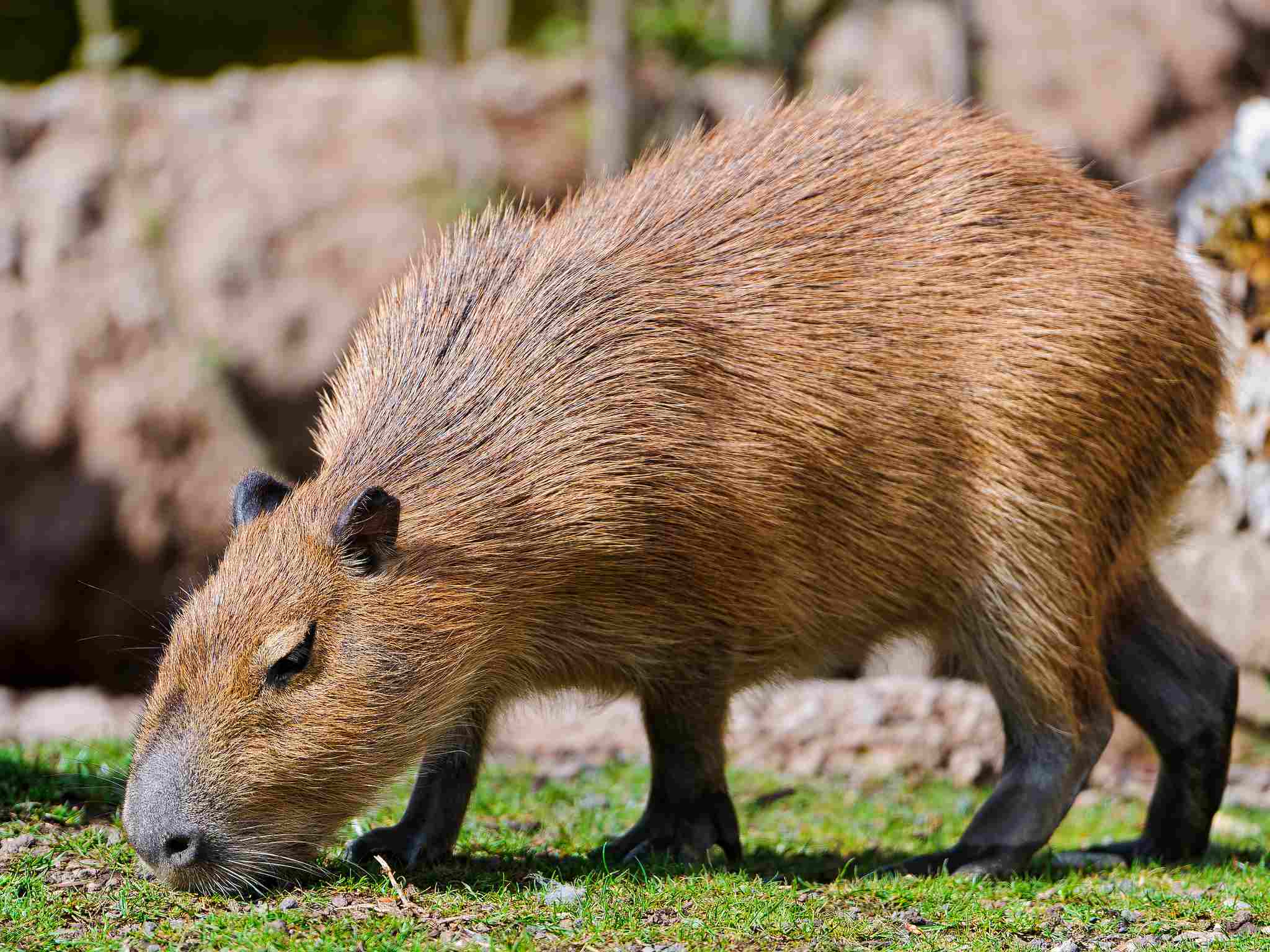
Capybaras are the largest rodents in the world and are commonly found in the rainforests of South America. As primary consumers, they have a herbivorous diet, feeding mainly on grasses, aquatic plants, and fruits. Capybaras are highly adapted to their semi-aquatic habitat, often found near bodies of water such as rivers, lakes, and marshes, where they can easily access their preferred food sources.
These social animals typically live in groups near water bodies, where they graze on grasses and aquatic vegetation during the day and rest in the shade or water to avoid the intense heat of the rainforest. Capybaras are an essential prey species for predators such as jaguars, anacondas, and caimans, contributing to the intricate food web of the rainforest ecosystem.
4. Sloth
Sloths are iconic inhabitants of the rainforest canopy, known for their slow-moving and arboreal lifestyle. As primary consumers, sloths have a specialized diet consisting mainly of leaves, buds, and tender shoots from a variety of trees and plants. They are particularly fond of the leaves of the Cecropia tree, among others, which provide them with essential nutrients.
Due to their slow metabolism and low-energy lifestyle, sloths have evolved unique adaptations to conserve energy, such as their slow movements and reduced body temperature. They spend the majority of their time hanging upside down from tree branches, where they feed, rest, and even sleep. Sloths play a crucial role in the rainforest ecosystem by consuming leaves and facilitating nutrient cycling through their droppings, which contribute to soil fertility and plant growth. Additionally, sloths are prey for predators such as eagles, snakes, and big cats, further influencing the dynamics of the rainforest food web.
5. Toucan
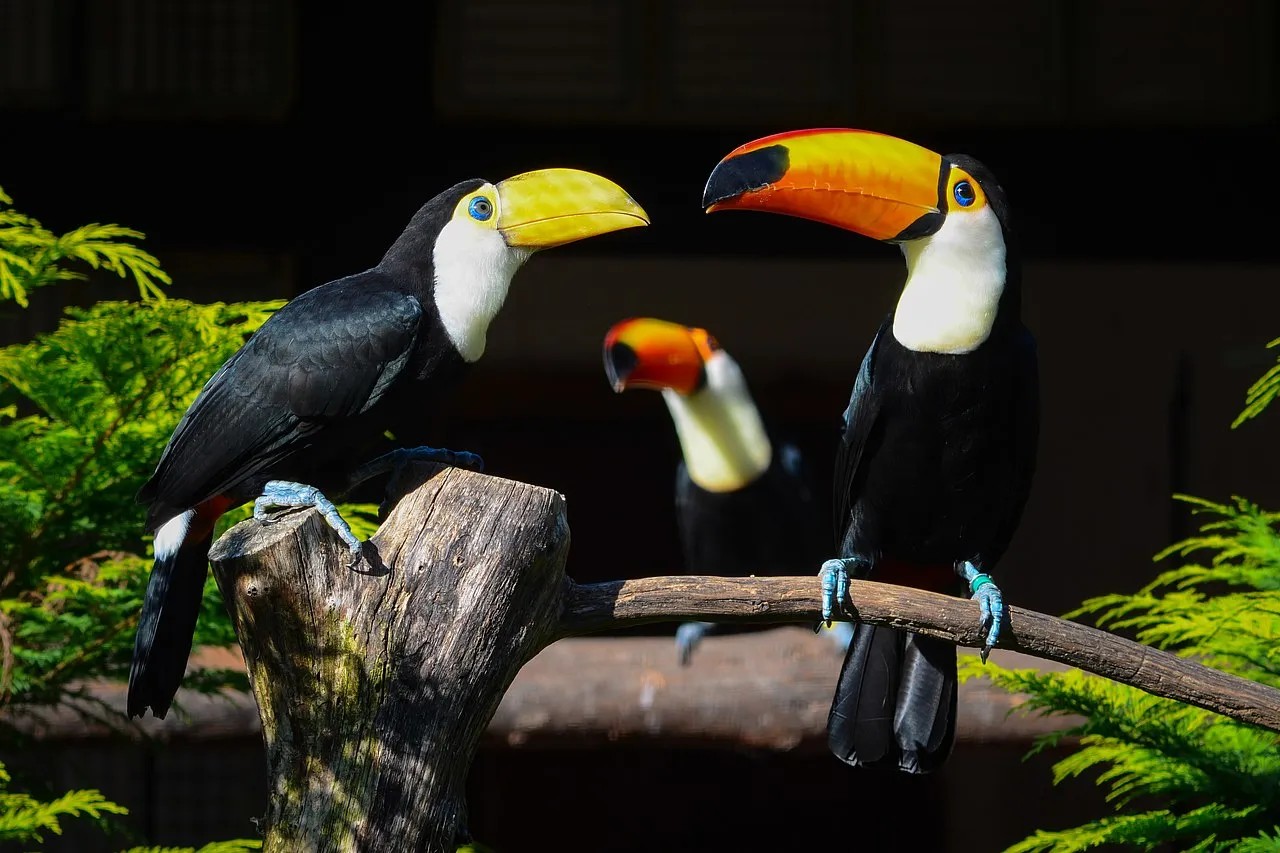
Toucans are colorful birds that inhabit the canopy layer of the rainforest in Central and South America. As primary consumers, toucans primarily feed on fruits, but they also consume a variety of other plant materials, including seeds, insects, and even small reptiles or bird eggs. Their large, colorful bills are well-adapted for reaching and manipulating fruits in the dense canopy.
Toucans play an important ecological role as seed dispersers in the rainforest ecosystem. After consuming fruits, they often regurgitate seeds or excrete them intact, helping to disperse seeds across the forest floor and promote the germination and growth of new plants. By feeding on a diverse array of fruits and other plant materials, toucans contribute to the maintenance of plant diversity in the rainforest.
6. Agouti
Agoutis are small rodents native to the rainforests of Central and South America. As primary consumers, agoutis have a primarily herbivorous diet, feeding on a variety of plant materials, including fruits, seeds, nuts, and roots. They play a key role in seed dispersal in the rainforest ecosystem, as they often bury seeds for later consumption but may forget some of them, allowing them to germinate and grow into new plants.
Agoutis are highly active during the day, foraging for food on the forest floor using their sharp claws to dig up roots and tubers. They are an important prey species for predators such as jaguars, ocelots, and birds of prey, contributing to the intricate food web of the rainforest ecosystem.
7. Macaw
Macaws are large, brightly colored parrots found in the rainforests of Central and South America. As primary consumers, macaws have a predominantly frugivorous diet, feeding on a wide variety of fruits, nuts, seeds, and berries found in the canopy. Their strong beaks are well-suited for cracking open tough nuts and seeds.
Macaws play a vital role in seed dispersal in the rainforest ecosystem. After consuming fruits and seeds, they often fly long distances before depositing seeds in new locations through their droppings, helping to establish new plants and maintain plant diversity. Additionally, macaws are important pollinators for certain tree species, further contributing to the health and resilience of the rainforest ecosystem.
8. Fruit Bat
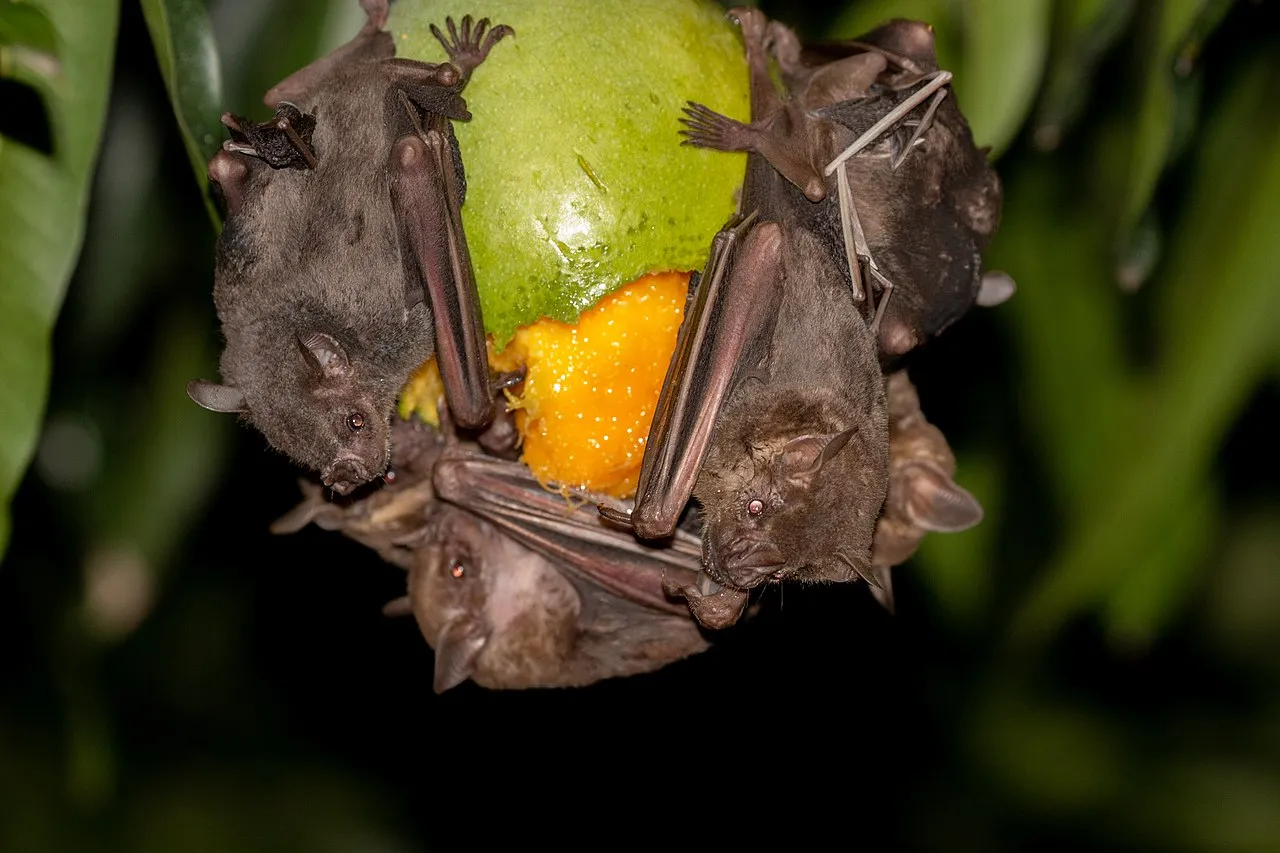
Fruit bats, also known as flying foxes, are important primary consumers in the rainforest ecosystem. These nocturnal mammals primarily feed on fruits, nectar, and pollen, using their keen senses of smell and sight to locate food sources in the dense canopy. Fruit bats play a crucial role in seed dispersal and pollination in the rainforest, as they consume a variety of fruits and disperse seeds across large distances through their droppings.
As they feed on nectar from flowers, fruit bats inadvertently transfer pollen between plants, facilitating the reproduction and genetic diversity of flowering species in the rainforest. Their large wings enable them to cover vast distances in search of food, making them effective dispersers of seeds and pollinators of flowering plants. Fruit bats are essential for maintaining the health and diversity of the rainforest ecosystem.
9. Tapir
Tapirs are large, herbivorous mammals found in the rainforests of Central and South America, as well as Southeast Asia. As primary consumers, tapirs have a diverse diet consisting of fruits, leaves, shoots, and aquatic vegetation. Their flexible snouts, similar to a trunk, allow them to grab and consume a variety of plant materials.
Tapirs play a crucial role in seed dispersal in the rainforest ecosystem. After consuming fruits, they often travel long distances before depositing seeds in their feces, helping to spread seeds across different habitats and promote the growth of new plants. Tapirs also contribute to nutrient cycling in the ecosystem through their consumption of plant materials and subsequent deposition of organic matter.
10. Leaf-Eating Insects
Leaf-eating insects, such as caterpillars and beetles, are abundant primary consumers in the rainforest ecosystem. These insects feed on a wide variety of plant materials, including leaves, stems, and flowers, and play a significant role in herbivory within the rainforest canopy. While some leaf-eating insects may be considered pests by humans, they are essential components of the rainforest food web and contribute to nutrient cycling and ecosystem dynamics.
Leaf-eating insects can have significant impacts on plant populations, influencing plant growth, reproduction, and species composition. They are also an important food source for many other organisms in the rainforest, including birds, reptiles, amphibians, and other insects, contributing to the overall biodiversity and ecological balance of the ecosystem.
11. Herbivorous Rodents (e.g., Agoutis, Porcupines)
Herbivorous rodents are abundant primary consumers in the rainforest ecosystem, playing a vital role in the consumption of plant materials and seed dispersal. Species like agoutis and porcupines have adapted to feed on a variety of plant parts, including fruits, seeds, nuts, leaves, and roots. These rodents contribute to nutrient cycling by consuming plant matter and depositing organic material through their feces.
Agoutis, for example, are known for their habit of burying seeds for later consumption, which helps to disperse seeds across the forest floor and promote the growth of new plants. Porcupines also play a role in seed dispersal through their feeding habits, as they consume fruits and seeds and may inadvertently drop seeds as they move through the forest.
12. Deer and Ungulates (e.g., Deer, Peccaries, Duikers)
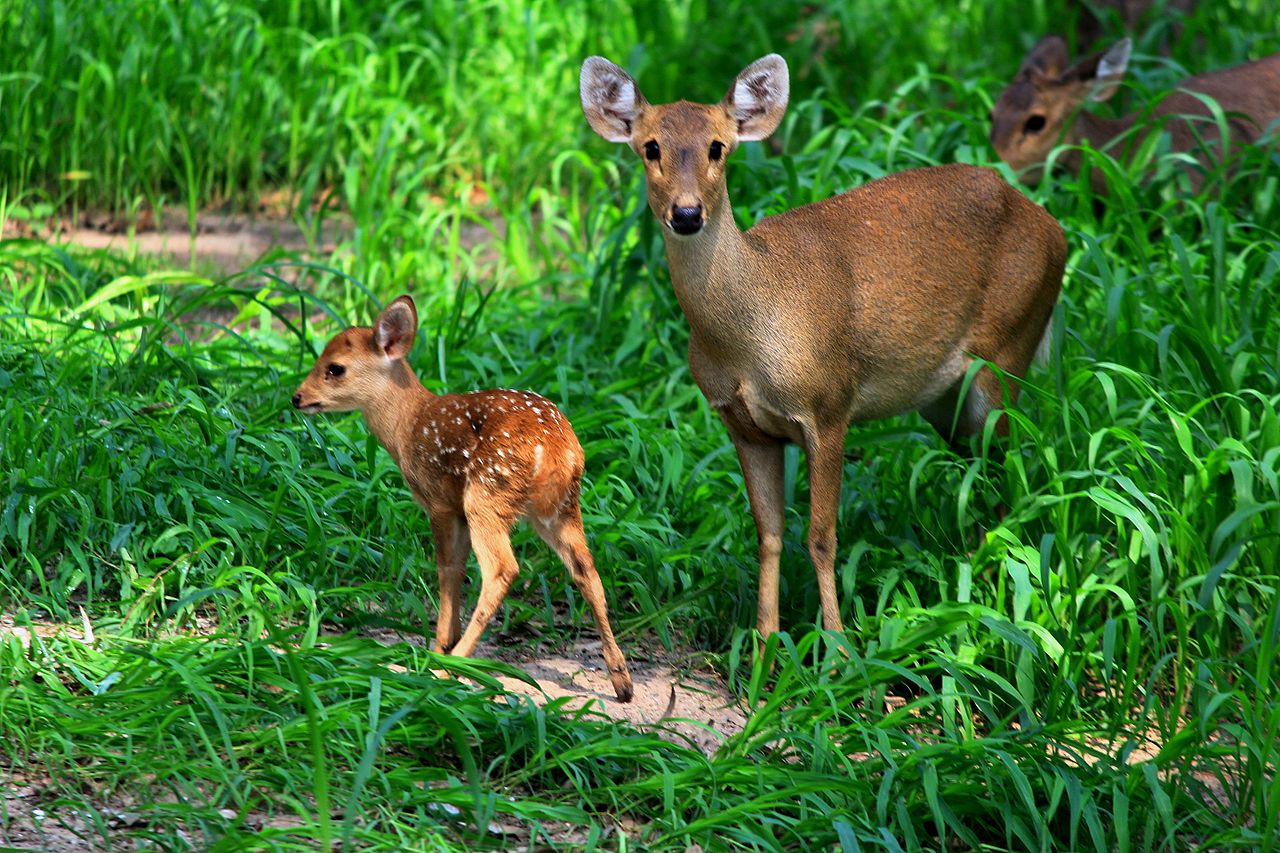
Deer and other ungulates are important primary consumers in the rainforest ecosystem, feeding on a variety of plant materials, including leaves, grasses, fruits, and young shoots. These herbivores play a crucial role in shaping plant communities through their grazing activities, which can influence plant growth, distribution, and species composition.
In addition to consuming plant matter, deer and ungulates also serve as prey for predators such as jaguars, pumas, and large snakes, contributing to the intricate food web of the rainforest ecosystem. Their movements and grazing behaviors also influence vegetation structure and nutrient cycling, affecting the overall health and diversity of the ecosystem.
13. Leaf-Cutter Ants
Leaf-cutter ants are highly specialized primary consumers in the rainforest ecosystem, known for their complex social structure and remarkable leaf-cutting behavior. These ants collect fresh vegetation, primarily leaves, which they carry back to their underground nests. Inside the nest, the leaves are processed by a specialized caste of worker ants, which chew them into a pulp. This pulp serves as a substrate for a fungus cultivated by the ants, which they then use as their primary food source.
Leaf-cutter ants play a significant ecological role in nutrient cycling and decomposition in the rainforest ecosystem. By cutting and processing vast quantities of leaves, they accelerate the decomposition process, releasing nutrients back into the soil and promoting the growth of new vegetation. Additionally, they contribute to the dispersal of fungal spores, which further enhances soil fertility and plant diversity.
14. Small Birds Feeding on Fruits and Seeds (e.g., Certain Finch and Tanager Species)
Small birds that feed on fruits and seeds are important primary consumers in the rainforest ecosystem, contributing to seed dispersal and nutrient cycling. Species like finches and tanagers play a crucial role in dispersing seeds by consuming fruits and then depositing seeds in new locations through their droppings.
These birds often feed on a variety of fruits and seeds found in the rainforest canopy, utilizing their beaks to crack open tough seed casings and extract the nutritious contents. In addition to seed dispersal, small birds also contribute to pollination by feeding on nectar from flowers, inadvertently transferring pollen between plants as they forage. Overall, these avian primary consumers play a vital role in maintaining the health and diversity of the rainforest ecosystem.
| Primary Consumer | Description |
Role in Ecosystem
|
| Howler Monkey | Arboreal primates feeding mainly on leaves, fruits, and flowers. |
Contribute to nutrient cycling and seed dispersal.
|
| Leafcutter Ant | Social insects known for cutting and processing leaves to cultivate fungus as food. |
Accelerate decomposition and enhance soil fertility.
|
| Capybara | Large rodents with a herbivorous diet consisting of grasses, aquatic plants, and fruits. |
Prey for predators and contribute to seed dispersal.
|
| Sloth | Arboreal mammals with a diet primarily comprising leaves, buds, and tender shoots. |
Facilitate nutrient cycling through their droppings.
|
| Toucan | Colorful birds feeding on fruits, seeds, and occasionally small reptiles or bird eggs. |
Disperse seeds and contribute to pollination.
|
| Agouti | Small rodents consuming fruits, seeds, nuts, and roots; important for seed dispersal. |
Bury seeds for later consumption, aiding in seed dispersal.
|
| Macaw | Large parrots with a frugivorous diet; important for seed dispersal and pollination. |
Disperse seeds through droppings and contribute to pollination.
|
| Fruit Bat | Nocturnal mammals feeding on fruits, nectar, and pollen; crucial for seed dispersal and pollination. |
Disperse seeds through droppings and contribute to pollination.
|
| Tapir | Large herbivorous mammals consuming fruits, leaves, shoots, and aquatic vegetation. |
Aid in seed dispersal and contribute to nutrient cycling.
|
| Leaf-Eating Insects | Insects such as caterpillars and beetles feeding on leaves, stems, and flowers. |
Influence plant populations and serve as prey for other organisms.
|
| Herbivorous Rodents | Rodents like agoutis and porcupines feeding on fruits, seeds, nuts, leaves, and roots. |
Contribute to seed dispersal and nutrient cycling.
|
| Deer and Ungulates | Herbivorous mammals like deer and peccaries consuming leaves, grasses, fruits, and young shoots. |
Influence plant communities through grazing and serve as prey for predators.
|
| Leaf-Cutter Ants | Social ants cutting and processing leaves to cultivate fungus for food. |
Accelerate decomposition and enhance soil fertility.
|
| Small Birds Feeding on Fruits and Seeds | Small birds like certain finch and tanager species consuming fruits and seeds. |
Contribute to seed dispersal and pollination.
|
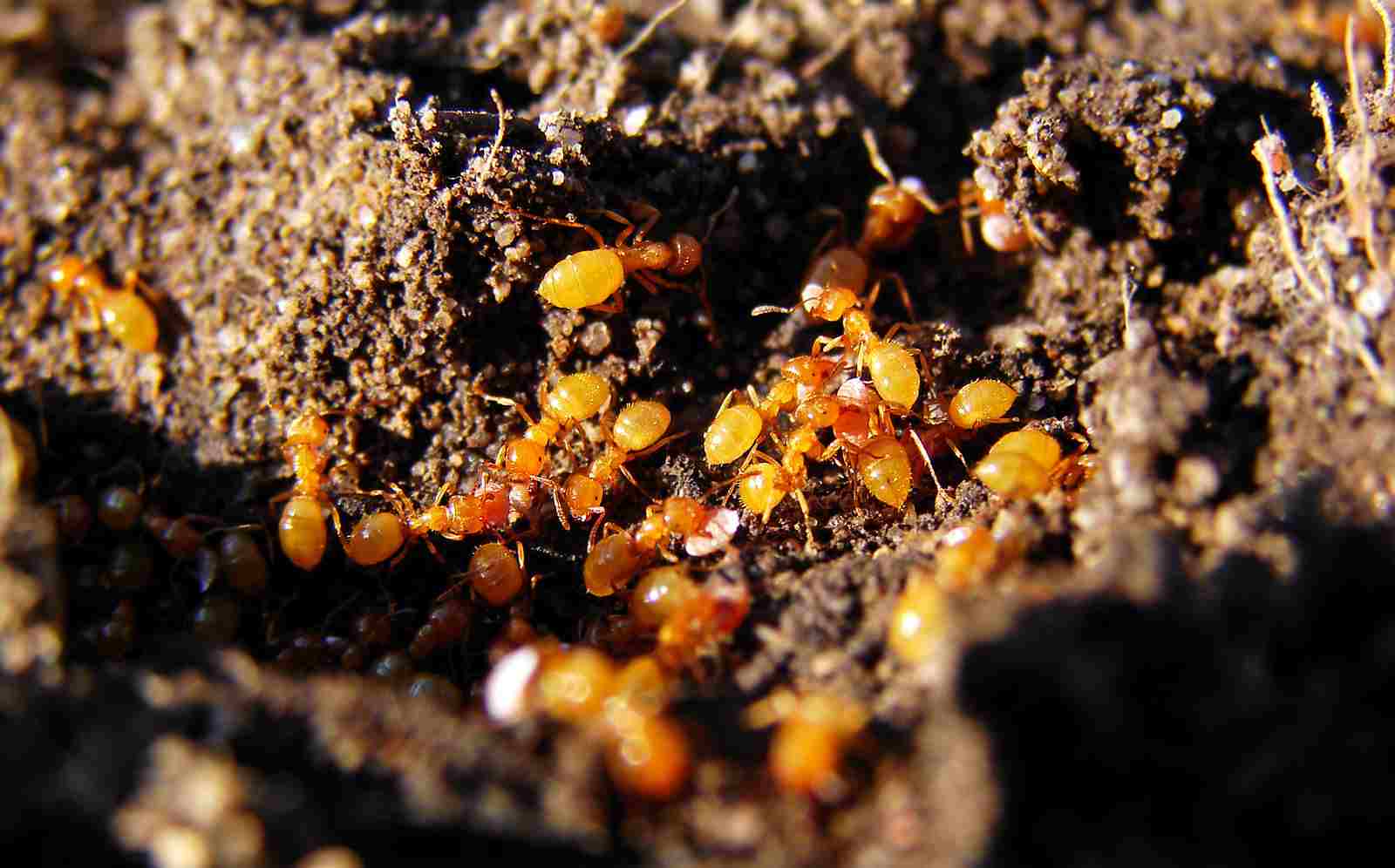
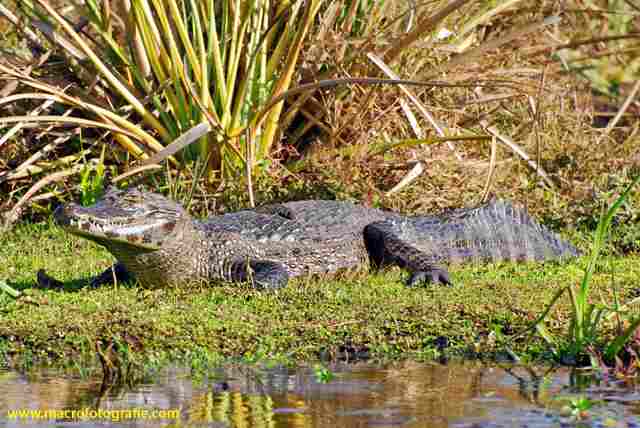
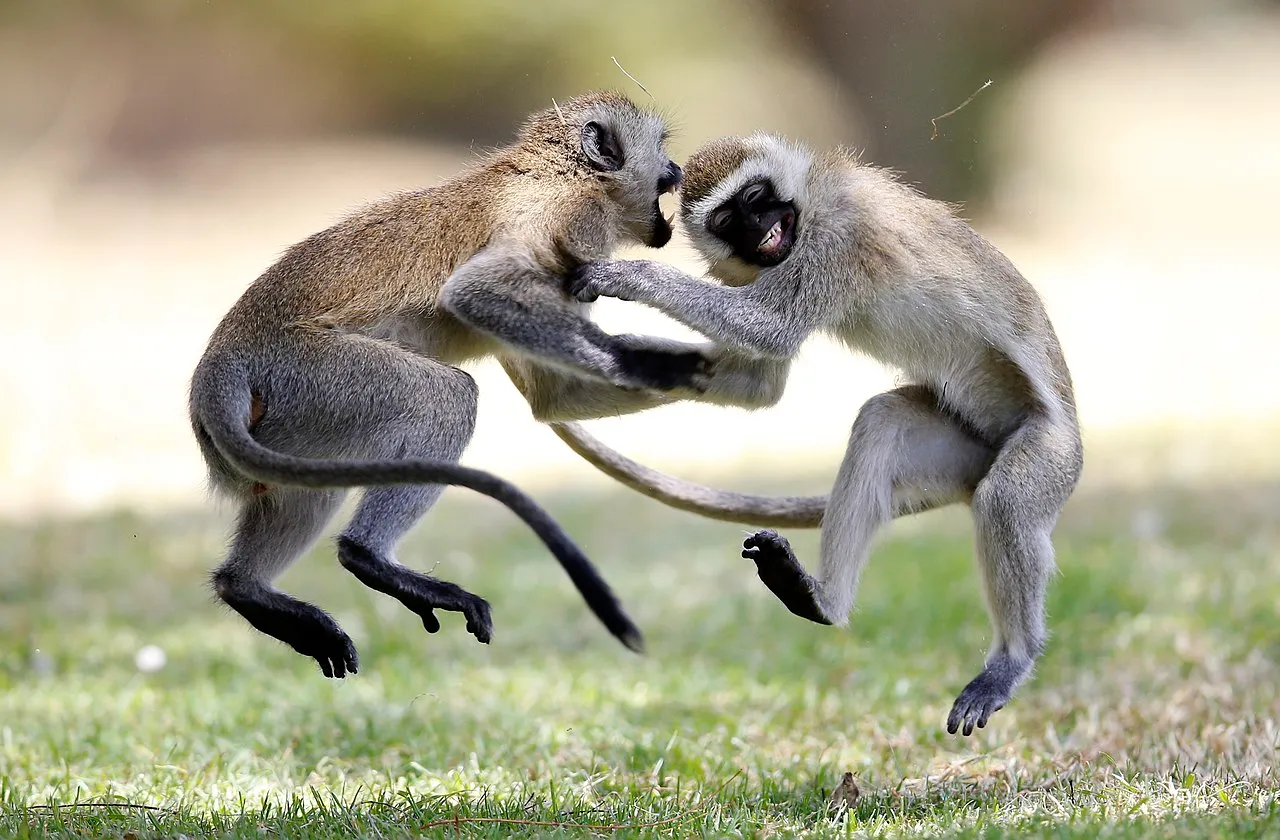

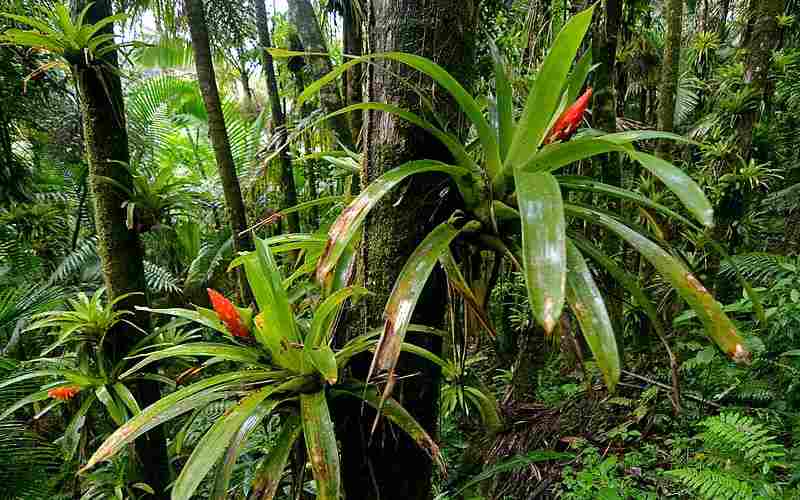
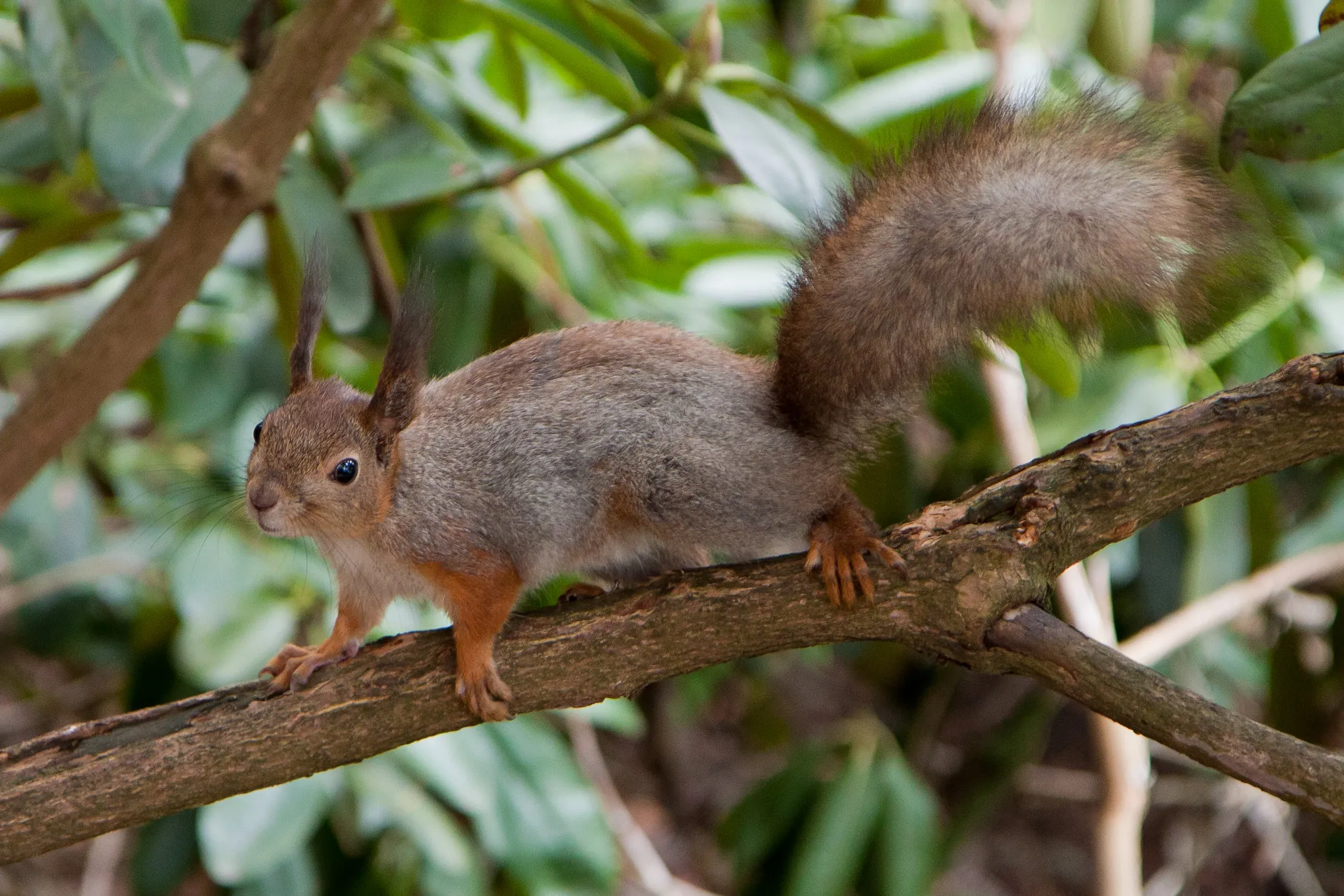
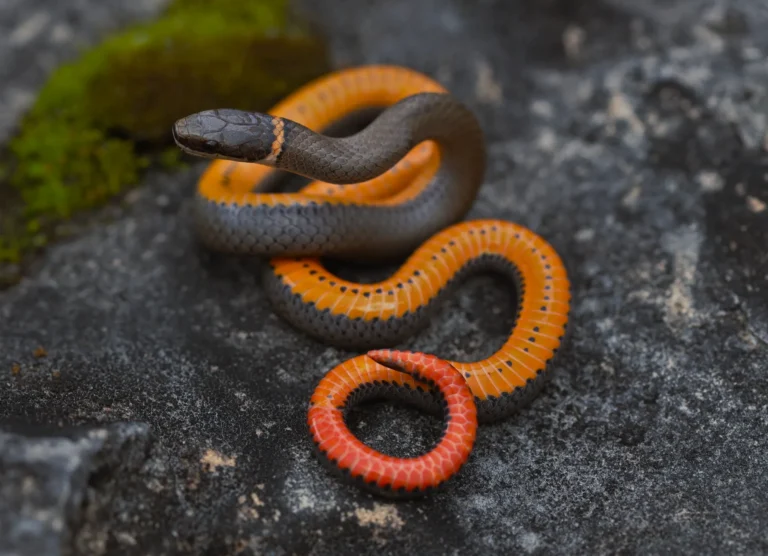
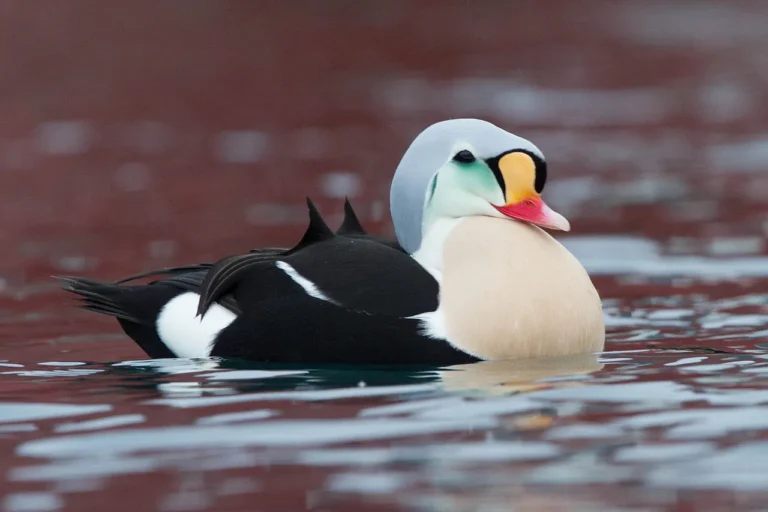
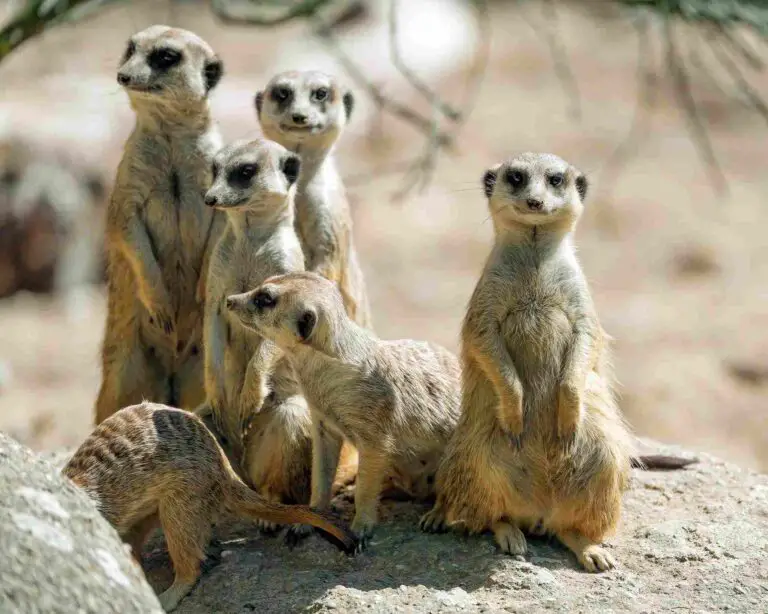

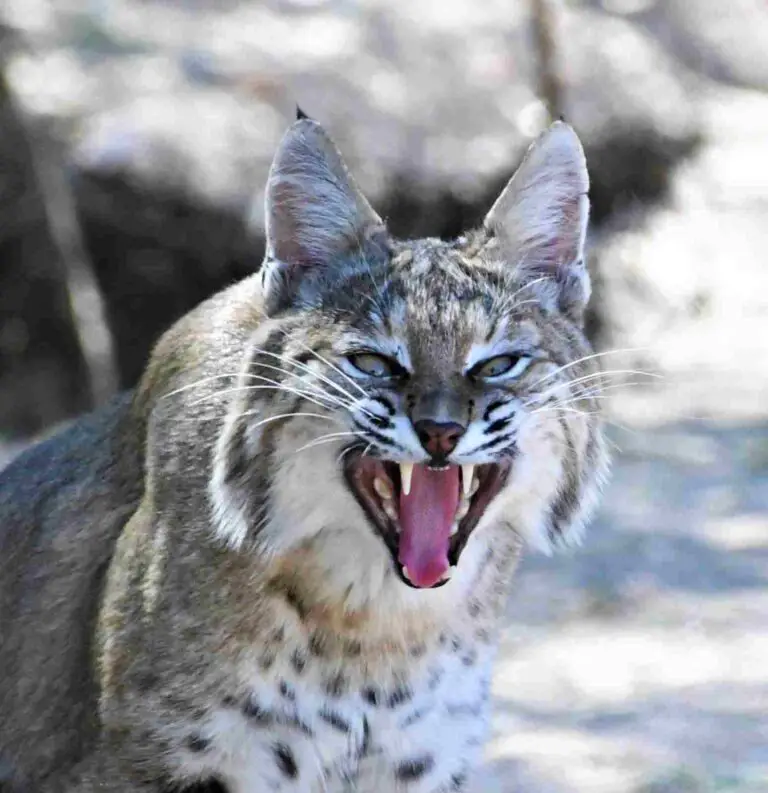
I just could not depart your web site prior to suggesting that I really loved the usual info an individual supply in your visitors Is gonna be back regularly to check up on new posts
Many thanks do feel free to return.
Your ability to distill complex concepts into digestible nuggets of wisdom is truly remarkable. I always come away from your blog feeling enlightened and inspired. Keep up the phenomenal work!
Thanks for the great comment! Feel free to come back as often as possible. You can also make any enquiries or join our budding community.